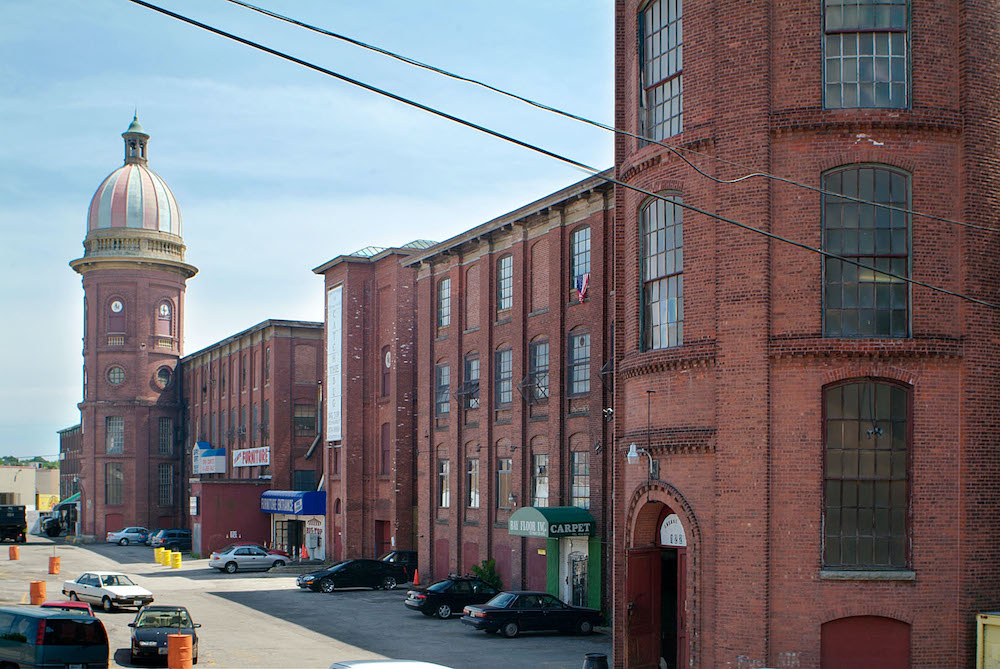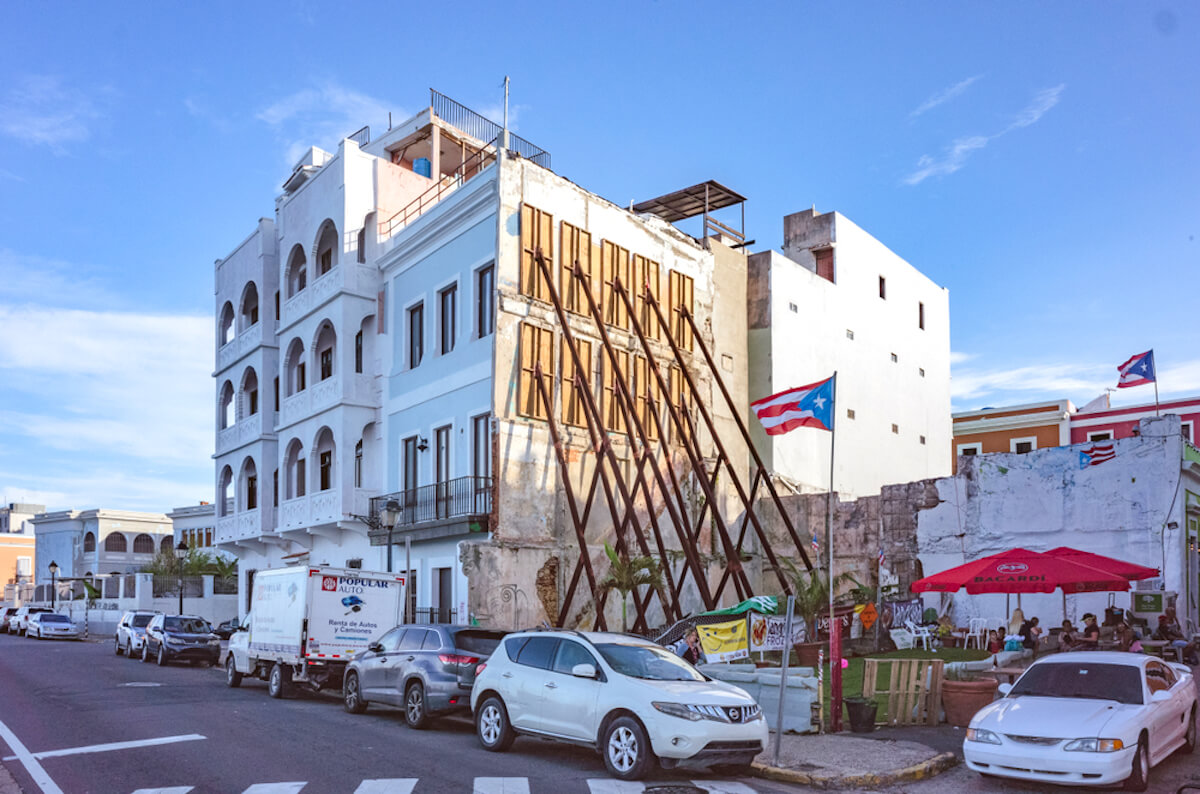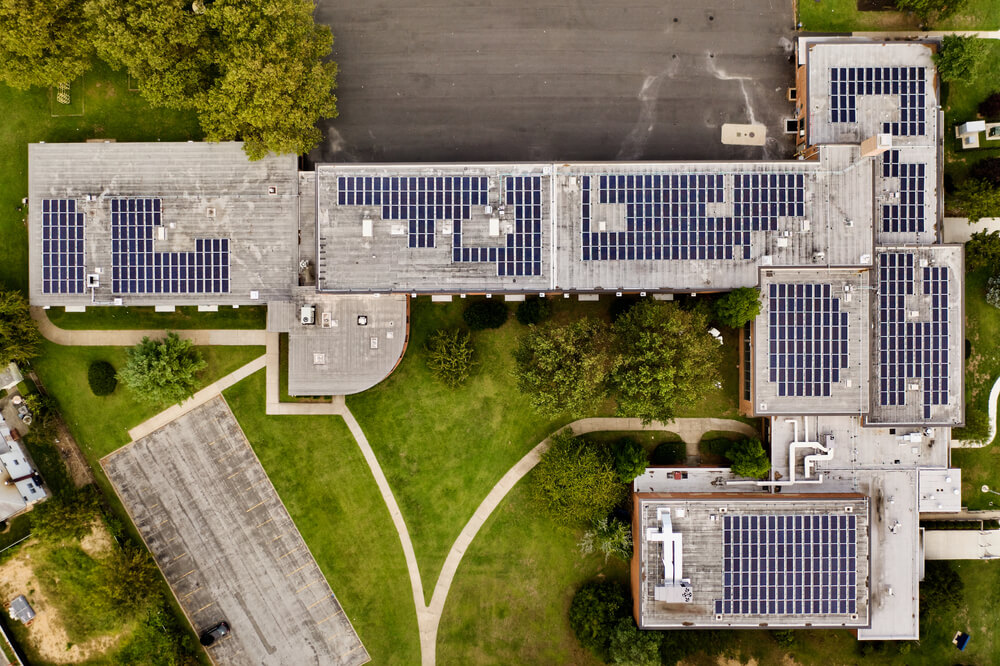The thought that the poor might achieve the same control over their destiny that the wealthy expect as their birthright is a radical notion in this country, but that is the unapologetic ambition of the neighborhood trust.
Neighborhood trusts achieve sustainable affordability in cities by transferring ownership and control of neighborhood assets to low-income residents and their chosen allies. The idea is beginning to take off, and pilots are under way in Philadelphia with the Kensington Corridor Trust and Kansas City with the Mixed Income Neighborhood Trust or MINT (see, “Neighborhood trusts are taking on speculators and building community wealth”).
I conceived the idea of the neighborhood trust during my research for my forthcoming book about Olneyville, a mostly Latino neighborhood on the west side of Providence, Rhode Island. The book, due this fall from Yale University Press, is called, Thanks for Everything—Now Get Out, which gives you an idea of the subject.
Olneyville was once the beating heart of the Providence textile industry. But by the 1980s, the machines were silent, the red brick buildings were hollowed shells, and Olneyville was one of the poorest, most distressed neighborhoods in the state. Politicians used to quip that the best thing the city could do was plow Olneyville into the Woonasquatucket River and build an industrial park. The neighborhood had all the challenges of a post-industrial city, including a collapsing infrastructure, a dilapidated and crumbling housing stock, extremely high levels of crime and disorder, and a police department that behaved like an occupying army.
The neighborhood hit bottom in the late 80s and early 90s, during the peak of the crack and AIDS epidemics. A few days before Christmas, 1989, the nine buildings that made up the Riverside Mill complex in Olneyville burned to the ground. The city left the charred carcass where it fell. The junkyard sprawled alongside Aleppo Street, the epicenter of neighborhood drug and gang activity. Aleppo Street and the area immediately adjacent to it represented only 3 percent of the entire neighborhood but accounted for nearly one in six calls to the police.
Yet as bad as the crime was, calling the police presented its own risks to Olneyville residents. A study in the nineties by the Department of Justice found that the PPD had more brutality complaints than any major city in the country except New Orleans and El Paso. The brutality was compounded by the corruption that could be traced back to the legendary mayor, Buddy Cianci. As a former captain in the department told me, Cianci ran the department “as his own private gestapo.”
A few hundred yards north of Aleppo Street stood William D’Abate Elementary School. Well into the 21st century, the principal at D’Abate refused to let the children use the playground during the school day, a decision he explained to me with a string of nouns that needed no verbs. “Guns, drugs, needles, pit bulls, glass.” And as bad as conditions were when he arrived in 2010, they were even worse fifteen years earlier, when a guard patrolled the school parking lot full-time, and graffiti covered the building.
This is the place – and these are the conditions – that the low-income residents of Olneyville endured for decades. Yet conditions like these would come as no surprise to anyone who lives in one of the thousands of neighborhoods like Olneyville all across the country. Nor would they be surprised by what happened next.
Community transformation
In the 1990s, a dedicated civic reformer with a long history of volunteer service to Providence leveraged her considerable personal and political connections to pry loose millions of dollars from the federal government to remediate the toxic junkyard that was once Riverside Mill. The city pitched in what it could, which was never a lot, and by the end of the 20th century, the site had become Riverside Park, a green oasis in the center of Olneyville.
As that work progressed, a community development corporation reclaimed Aleppo Street. Using funding from the sale of low-income housing tax credits, it acquired the land and built dozens of single-family homes and apartments priced at below-market rates. At the same time, the Providence Police Department completely revamped itself. After the feds busted Buddy Cianci, his successor brought in a new chief, who changed the culture of the department and replaced the violent, paramilitary mindset with a new, restrained force that viewed low-income residents as allies rather than targets, and did no more than the residents demanded. And finally, the principal at D’Abate turned the local elementary school into a prized neighborhood gem.
The transformation of Olneyville has been remarkable. Yet it has not gone unnoticed. In January 2014, Providence readers of Gawker magazine pegged Olneyville as “the Next Williamsburg.”
In the first decade and a half of the twenty-first century, average rents in the neighborhood climbed over 54 percent, more than twice the citywide average. Between 2000 and 2018, the number of people in the neighborhood who had attended college nearly doubled, and the number with a college or advanced degree nearly tripled. From 2009 to 2018, the number of non-Hispanic white residents in Olneyville increased nearly 60 percent, and the Gini inequality index, a standard measure of income inequality, increased more than 10 percent.
In 2009, inequality in the neighborhood was substantially below the national rate; by 2018, it was nearly as bad. In short, Olneyville in the twenty-first century has become whiter, better credentialed, significantly more unequal, and substantially more expensive—the most reliable indicators of gentrification and predictors of displacement.
Neighborhoods trusts
I conceived the neighborhood trust to interrupt this morally obscene trajectory. The problem, as the experience in Olneyville makes plain, is not that a distressed neighborhood is beyond change. On the contrary, the tools exist to make places like Olneyville safe, vibrant and healthy, if they are funded adequately and deployed effectively. Instead, the problem is that those tools can transform the neighborhood but cannot protect it. For one thing, the current approach cannot remove nearly enough property from the speculative market. This means that as the neighborhood improves, land values and rents outpace local wages, particularly given the sort of jobs created in our hourglass economy. Community land trusts are a partial solution to this problem, but they generally do not operate at sufficient scale to stabilize an entire neighborhood.
The second problem with the current approach – even more pressing than the first – is that it does not empower low-income residents. Too often, the current model reduces them to passive recipients of non-profit largesse. As many others have pointed out, the non-profits and community development corporations that operate in places like Olneyville tend to be staffed, directed, and funded by well-intentioned and well-educated whites who do not live in or come from the neighborhoods they serve. They get the experience, connections and social capital that comes from their work, while neighborhood residents typically play a supportive but peripheral role, creating only the appearance of resident power. “They’re pimping us,” an Olneyville resident said to me over dinner one evening. “I’m sorry to say it, but it’s true. They’re pimping us for ‘the urban experience.’”
The neighborhood trust tries to address both parts of the problem. The idea is to give low-income residents the ownership and control of as many neighborhood assets as possible, including not just the distressed property but the federal, state, municipal and foundation funding that comes into the neighborhood and which currently sustains the entire constellation of non-profit organizations. This funding can be supplemented by a variety of programs, including state or federal tax credits as well as investments from socially conscious funds. The assets are then placed into a perpetual purpose trust controlled entirely by neighborhood residents and their chosen allies.
By itself, a neighborhood trust will not solve all the problems that confront a place like Olneyville. It will not stop climate change, revive the manufacturing sector, or magically make people tolerant. It will not end racism, classism, or xenophobia. But it will achieve something that has never been done in this country. It will give the poor ownership and control of the wealth in their neighborhoods. This will allow them to permanently capture increases in the value of land, to invest and manage their capital, and to deploy their assets as they see fit. It will restore some of the wealth and social capital that have been drained away by decades of disinvestment and neglect. It will align capital with the interests of the poor rather than the wealthy. And that is the unapologetic ambition of my book.
Joseph Margulies is a professor of the practice of law and government at Cornell University. His book “Thanks for Everything—Now Get Out” is due this fall.











